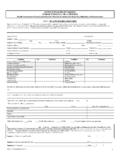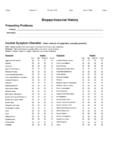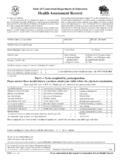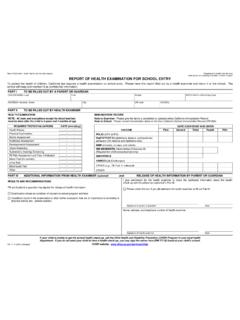Transcription of Eylea, INN-aflibercept Assessment report …
1 7 Westferry Circus Canary Wharf London E14 4HB United KingdomTelephone+44 (0)20 7418 8400 Facsimile+44 (0)20 7523 agency of the European Union 20 September 2012 EMA/646256/2012 corrCommittee for Medicinal Products for Human Use (CHMP) Assessment reportEyleaaflibercept Procedure No.: EMEA/H/C/002392/NoteAssessment report as adopted by the CHMP withall information of a commercially confidential nature Assessment reportEMA/646256/2012 Page 2/83 Table of contents1. Backgroundinformation on the Submission of the Steps taken for the Assessment of the Scientific Quality Active Finished Medicinal Discussion on chemical, pharmaceutical and biological Conclusions on the chemical, pharmaceutical and biological Non-clinical Ecotoxicity/environmental risk Discussion on non-clinical Conclusion on the non-clinical Clinical Discussion on clinical Conclusions on clinical Clinical Dose response study(ies).
2 Main study(ies).. Discussion on clinical Conclusions on the clinical Clinical Discussion on clinical Conclusions on the clinical User Benefit-Risk Assessment reportEMA/646256/2012 Page 3/83 List of abbreviationsAbAntibodyADAAnti-drugantib odyADRA dverse drugreactionAEAdverseeventAEIAE ofinterestALTA lanineaminotransferaseAMDAge-related maculardegenerationANCOVAA nalysisofcovarianceAPTCAnti-Platelet Trialists CollaborationATEA rterialthromboemboliceventsAUCArea under the drug concentration-time curveBCVAB estcorrectedvisualacuityBLAB iologic License ApplicationBMIB odymassindexCappedPRNT ermused for flexible-dosingphasein theVIEW1and VIEW2 studiesCIConfidenceintervalCmaxMaximum observed plasma drug concentrationCNVC horoidalneovascularizationCRFCase reportformCR/LTCentralRetinal LesionThicknessCRTC entral retinalthicknessCRVOC entral retinal veinocclusionCSRC linical studyreportCVAC erebrovascularaccidentDADiscarea (4 DA = mm2)
3 DLTD oselimitingtoxicityDMED iabetic macularedemaECGE lectrocardiogramELISAE nzyme-linkedimmunosorbentassayETDRSE arlyTreatmentDiabeticRetinopathyStudyEUE uropeanUnionFAFluoresceinangiographyFASF ull analysissetFcFragment, crystallizable region orconstantFDAFood and DrugAdministrationFixed-dosingphaseFixed protocol-specifiedscheduleFlexible-dosin gphaseBased on specific retreatment criteria PRN (as needed)phaseFSHF ollicle-stimulatinghormoneGLPGood LaboratoryPracticeIgImmunoglobulinINRI nternationalnormalizedratioIOPI ntraocularpressureIVIntravenousIVTI ntravitrealLOAELL owest-observable-adverse-effectlevelLOCF L astobservationcarriedforwardLSMeanLeast- squaremeanMAAM arketing Authorisation ApplicationMedDRAM edical Dictionary for RegulatoryActivitiesMTDM aximum tolerateddoseNEI-VFQ-25 NationalEyeInstitute25-Item Visual FunctionQuestionnaireNOAELNo-observed-ad verse-effect levelNSCLANon-small-cell lungadenocarcinomaNYHANew York HeartAssociationOCTO pticalcoherencetomographyCHMP Assessment reportEMA/646256/2012 Page 4/83 PDPharmacodynamicPDTP hotodynamictherapyPFSPre-filled syringePKPharmacokineticsPIGEP lacental growth factorPMDAP harmaceutical and Medical Devices AgencyPPSPer protocol setPPTP artial thromboplastin timePTPreferred termPRNAs need (pro re nata)
4 QOLQ uality of lifeRAASR enin angiotensin aldosterone systemRBCRed blood cellRECISTR esponse evaluation criteria in solid tumorsRegeneronRegeneron Pharmaceuticals, adverse eventSAFS afety analysis setSAPS tatistical Analysis PlanSCSubcutaneousSDStandarddeviationSOC S ystemorganclassSPAS pecial Protocol AssessmentTEAET reatment-emergent adverseeventTJAT ransient ischemicattackULNU pperlimitofnormalUPCRU rine/proteincreatinineratioUSUnitedState sVEGF- AVascular endothelial growthfactor AVEGFRVEGF receptorVAVisualacuityVTEVEGFTrap (formulation for IVT injectionWBCW hite bloodcellWET AMDN eovascularage-relatedmaculardegeneration WHOW orld HealthOrganizationWOCFW orstobservationcarriedforwardCHMP Assessment reportEMA/646256/2012 Page 5/83 DOSE GROUPS ABBREVIATIONSP hase-2 Study mg VEGF Trap dosed on a monthly basis (ie, every 4 weeks)2Q42 mg VEGF Trap dosed on a monthly basis (ie, every 4 weeks) ,5 mg VEGF Trap dosed on a quaterly basis (ie, every 12 weeks)2Q122 mg VEGF Trap dosed on a quaterly basis (ie, every 12 weeks)4Q124 mg VEGF Trap dosed on a quaterly basis (ie, every 4 weeks)Phase-3 Studies VIEW 1 (VGTF OD 605), VIEW 2 (A36355) Integrated analysis POOL mg ranibizumab dosed on a monthly basis (ie, every 4 weeks)2Q42 mg VEGF Trap dosed on a monthly basis (ie, every 4 weeks) mg VEGF Trap dosed on a monthly basis (ie, every 4 weeks)2Q82 mg VEGF Trap dosed every two months (ie, every 0 weeks) after three initial monthly dosesCHMP Assessment reportEMA/646256/2012 Page 6/831.)
5 Backgroundinformation on the Submission of the dossierThe applicant Bayer Pharma AGsubmitted on 31 May 2011an application for Marketing Authorisation to the European Medicines Agency (EMA) for Eylea, through the centralised procedure falling within the Article 3(1) and point 1 of Annex of Regulation (EC) No 726/2004. The applicant applied for the following indication treatment of neovascular (wet) age-related macular degeneration (AMD).The legal basis for this application refers to: Article of Directive 2001/83/EC - complete and independent application submitted is composed of administrative information, complete quality data, non-clinical and clinical data based on applicants own tests and studies and/or bibliographic literature substituting/supporting certain tests or on Paediatric requirementsPursuant to Article 8 of Regulation (EC) No 1901/2006, the application included an EMA Decision (EMEA/56/2008) on the granting of a class waiver.
6 New active Substance statusThe applicant requested the active substance aflibercept contained in the above medicinal product to be considered as a new active substance in AdviceSeveral Scientific Advices were given by the EMA and other regulatory Scientific Advices March and June 2007: MPA advice on clinical questions for the planned Phase 3 trial design and non-clinical development programme;July and August 2007: CHMP advice on the same aspects as discussed with MPA;May July 2010: National agency meetings with Denmark, Germany, Spain, Sweden on clinical aspects of the submission package for the MAA;November 2010: EMA pre-submission meeting on regulatory aspects of the MAA;January 2011: Rapporteur / Co-Rapporteur meeting on specific issues around the clinical data package for the (FDA)March 2007: Special Protocol Assistance (SPA) for Phase-3 study design VIEW1 support 2007: Second SPA for Phase-3 study VIEW1 agreements on amended Phase-3 study design, including a change in the VEGF Trap dose regimensSeptember 2010: Pre-Biologic License Application (BLA) meeting on specific clinical (PMDA)August 2007: Scientific advice meeting with Pharmaceutical and Medical Devices Agency (PMDA) on Phase-3 study Assessment reportEMA/646256/2012 Page 7/83 Overall, the clinical development programme appears fairly in compliance with the CHMP and national agencies scientific advices.
7 The design/analysis of pivotal studies was widely discussed across these consultations. Some topics were thoroughly discussed with the CHMP ( choice of primary variable and non-inferiority margin in pivotal studies) as they were slightly controversial. Region-specific feedback on each aspect has been implemented as protocols local, or if relevant, as general amendments to both pivotal studies. Finally, although some preliminary advices were not always fully taken into account by the MAA, there were acceptable justifications for such deviations. Licensing statusEylea has been given a Marketing Authorisation in The USA in 2011 and in Colombia and Australiain Steps taken for the Assessment of the productThe Rapporteur and Co-Rapporteur appointed by the CHMP were:Rapporteur: Philippe LechatCo-Rapporteur:Robert James HemmingsCHMP Peer reviewer: Conception Prieto YerroThe EMA Product Team Leader: Francesca CerretaThe application was received by the EMA on 31 May procedure started on 22 June 2011.
8 The Rapporteur's first Assessment report was circulated to all CHMP members on 12 September 2011 (Annex 1). The Co-Rapporteur's first Assessment report was circulated to all CHMP members on 13 September 2011 (Annex 2). During the meeting on 20 October 2011, the CHMP agreed on the consolidated List of Questions to be sent to the applicant. The final consolidated List of Questions was sent to the applicant on21 October 2011 (Annex 3).The applicant submitted the responses to the CHMP consolidated List of Questions on 18 April Rapporteurs circulated the Joint Assessment Reports on the applicant s responses to the List of Questions to all CHMP members on 6 June 2012 (Annex 4).During the CHMP meeting on 18-21 June 2012, the CHMP agreed on a list of outstanding issues to be addressed in writing and/or in an oral explanation by the applicant (Annex 5).The applicant submitted the responses to the CHMP List of Outstanding Issues on 20 August Rapporteurs circulated the Joint Assessment Reports on the applicant s responses to the List of Outstanding Issues to all CHMP members on 4 September 2012 (Annex 6).
9 The Rapporteurs circulated the updated Joint Assessment Reports to all CHMP members on 14 September 2012 (Annex 7).During the meeting on 17-20 September 2012, the CHMP, in the light of the overall data submitted and the scientific discussion within the Committee, issued a positive opinion for granting a Marketing Authorisation to Eylea on 20 September Assessment reportEMA/646256/2012 Page 8/832. Scientific IntroductionNeovascular age-related macular degeneration (AMD) is a common cause of irreversible blindness among the elderly worldwide. Vision loss results from the abnormal growth and leakage of blood vessels in the macula. Increasing incidence is reported with increasing age (it is suggested that 10% of individuals aged 65 to 74 years, and 30% of those aged 75 to 85 years, show signs of AMD). The main factor of progression remains age, besidesgenetics and is a disease of the photoreceptors and the retinal pigment epithelium (RPE). In the aging eye, Bruch s membrane composition changes, and RPE function diminishes.
10 As a consequence of reduced RPE function, drusen deposits at the level of the RPE and photoreceptors accumulate. Drusen contain lipofuscin and other toxic waste products of are two forms of AMD, the dry (atrophic) and the wet ( neovascular or exudative) AMDThe dry form is more benign and accounts for 90% of all AMD cases, but only for 10% of cases of blindness due to AMD. In the dry form, no abnormal vascularisation occurs in the subretinal space and drusen deposits are clustered in and around the macula, and these become larger and more numerous over time. Nevertheless, dry AMD with drusen only is generally asymptomatic. If, in addition to drusen, RPE cells degenerate and undergo apoptosis, geographic atrophy develops which can, if involving the fovea, significantly reduce near and distance vision. Eventually, the RPE atrophies. This results in a loss of vision due to the loss of photoreceptor function. Patients suffering from an atrophic form of AMD do not benefit from the same therapeutic options than wet AMD.
















